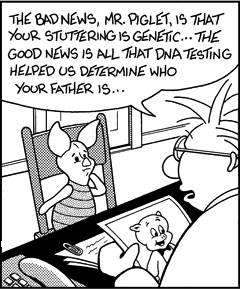- Home
- Finding Lost Family
Finding Long Lost Family

I was successful at finding long lost family through DNA testing way back in 2007.
You can read about this pioneering breakthrough in my book, Finding Family: My Search for Roots and the Secrets in My DNA.
Since then, thousands of adoptees have used genetic genealogy DNA tests to identify and often reunite with birth parents and siblings.
More recently, donor-conceived individuals have been applying the same tools and techniques as adoptees to identify their sperm-donor fathers.
In addition, many people who discover or suspect that the man who raised them was not their biological father are using these tests to discover the truth.
The Recommended Testing Strategy
The most successful method for finding long lost family is to “fish in all the ponds.” This means to get your DNA data into every one of the major autosomal DNA databases:
Most people only do one test, and you can’t tell in advance which one will yield your closest relative or a person with critical information about your birth.
Since the cost of testing is so reasonable today, testing directly with all of them is not a huge investment. Use the above links to see current prices and order your tests.
If your funds are more limited, you can take advantage of the tests that accept free data uploads from others. This will take much longer since you are doing things sequentially instead of all at once. But it will save you money.
Begin by ordering the AncestryDNA test, the 23andMe test, and the MyHeritage test at these links.
These testing companies do not accept uploads from other tests. You must order their tests directly and return your DNA samples. Results typically take 6-10 weeks to appear in your private, password-protected accounts.
Once your AncestryDNA results are in, download your raw data and upload it for free into Family Finder and Living DNA. These links go directly to the upload pages.
To access all the testing company features with an uploaded account, you may need to pay an optional one-time fee that is still a lot less than the cost of full testing.
Genetic Matches Are the Key
Each test will show you a list of people sharing significant amounts of DNA with you. If you see a parent, sibling, or close cousin, you can try to contact him or her.
Should you only see distant cousin matches, you have a lot more work ahead of you in finding long lost family.
Even distant cousins share common ancestors with you. Using genealogical research, you work backward in time to identify those ancestors. Then you work forward in time to identify their descendants and, hopefully, find a potential parent who lived in the time and place of your birth.
Finding long lost family is typically a do-it-yourself project. You need to acquire genealogy skills and learn to use many of the genetic genealogy tools on the DNA Tools page.
It can take months or years to complete this kind of search. The people you want to find—and their relatives who know the secrets surrounding your birth—are all getting older. As your search drags on, some of them will die before the mystery is solved.
Get Help from Others
Lots of people have been through such searches and are willing to help. To get any of your questions answered join the DNA Detectives group on Facebook. You may even find a volunteer search angel to help you.
Another way to find a search angel is through DNAngels, a nonprofit search angel organization dedicated to assisting individuals searching for their biological parent(s) using DNA interpretation, mapping, and extensive research.
If you have the funds, another option is to hire a professional genealogist from companies such as Legacy Tree Genealogists and Ancestry Pro Genealogists.
Surprises Are Possible When Finding Long Lost Family
 Source: Southern Genealogist's Exchange Society, Inc.
Source: Southern Genealogist's Exchange Society, Inc.With millions of people taking these DNA tests, there are bound to be some shocking discoveries. How do you handle unexpected news about birth relatives or misattributed parentage?
Brianne Kirkpatrick of Watershed DNA is my favorite authority in this area. She shares her advice in this guest post.